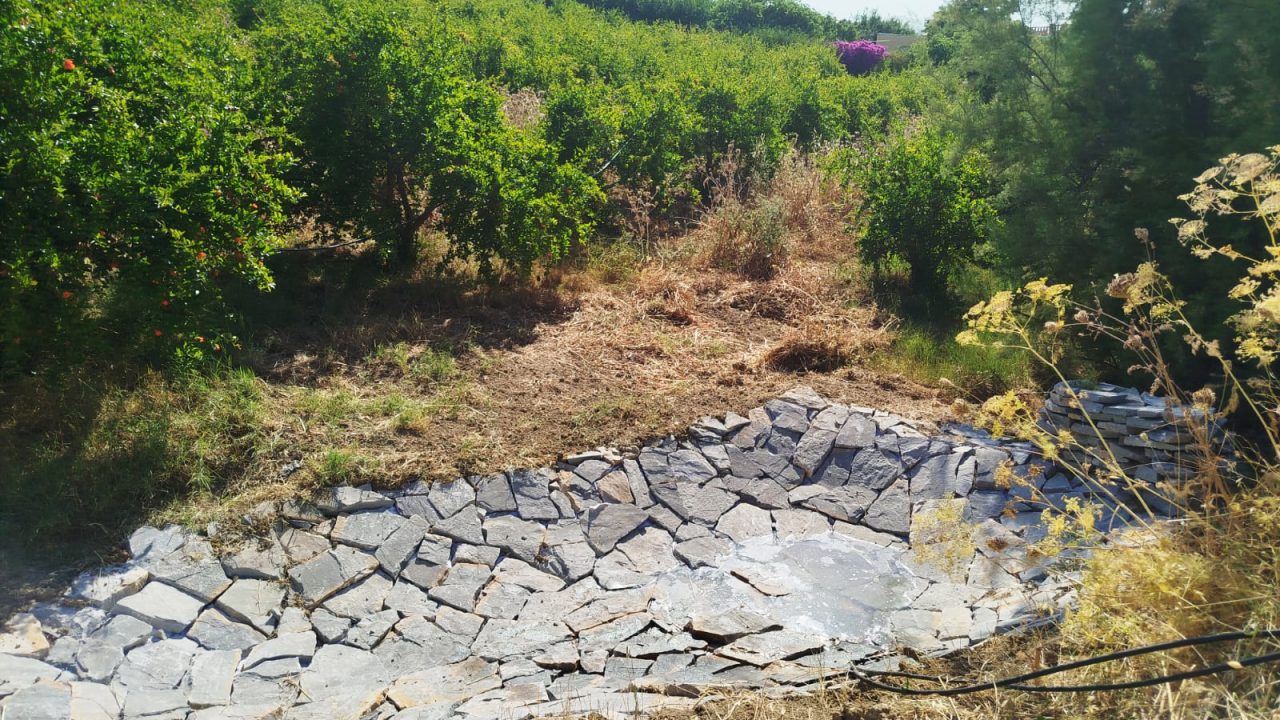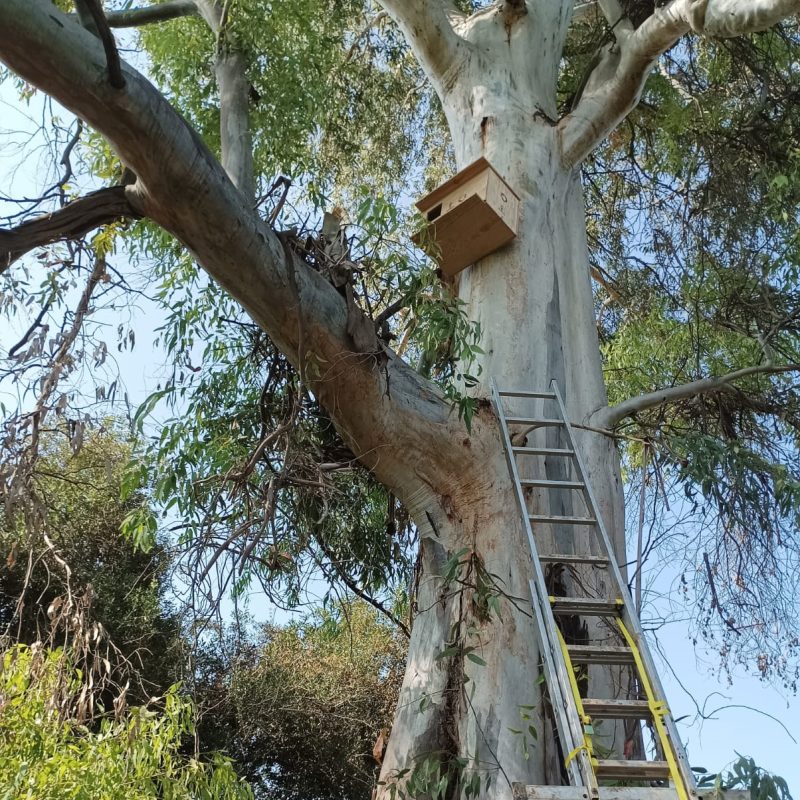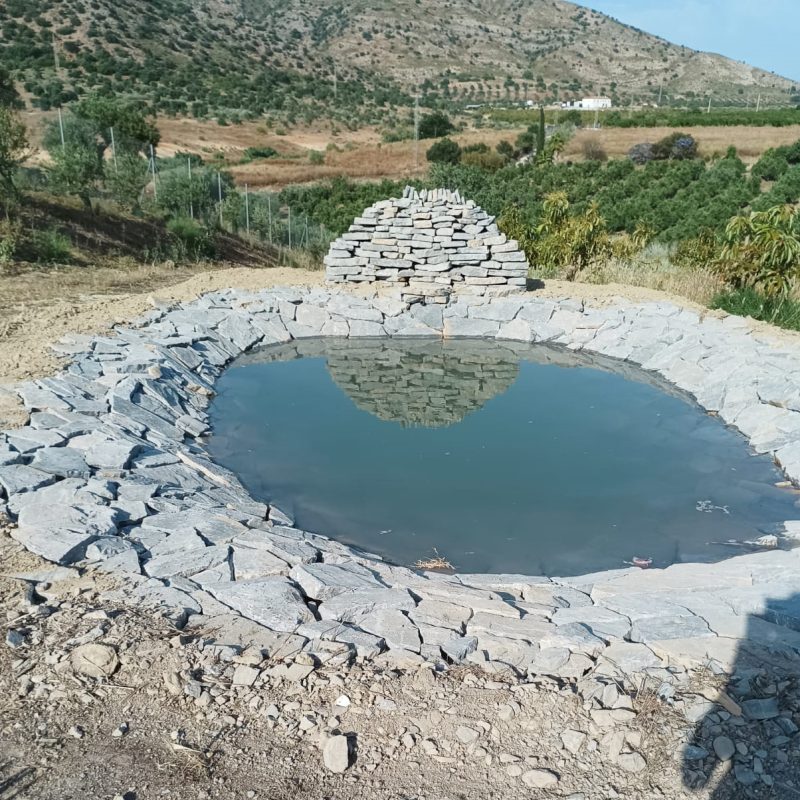We do more than just organic farming, we invest in biodiversity!
We are aware that it is not enough to meet the requirements of organic farming to preserve life, regenerate the soil and protect the diversity of plants and wildlife on our farms. If we really want to make a difference in our environment, if we want to change the world from where we stand now, it is important to go a little further.
In addition to the efforts that each of our farmers make on their own land, at Tierra y Libertad we have set up a collaborative project to optimise biodiversity in our fields, investing collectively in wild plants and in the installation of water points and nests to increase the natural biodiversity of our fields.

In recent decades, cultivated fields have become almost as detrimental to life as cities and roads. Today, when we drive through the countryside, we see kilometres of intensive monocultures in which all forms of life that are not useful for the production and profitability of the crop are ignored or even eliminated. By eliminating all wild herbs (so-called weeds), insects (beneficial or not), bacteria and fungi, by banishing reptiles and birds, not to mention the intensive use of water, we are transforming what was once living nature into an inert environment from which we only get a product that we then sell as food. This is the food that most people eat today.
This is not what we want for our fields, for our other possible future. We want living fields that are sustainable and offer much more than the fruit we produce: the basis of a healthy ecosystem. By conserving wild plant species, allowing herbs, shrubs or bushes to grow without herbicide treatment, encouraging insect populations, harbouring rodents, predators, birds, amphibians and reptiles, we are contributing to a greater biodiversity of our land. And more diversity always means more resilience to future changes and disturbances. Better soil management also means that a little more CO2 is absorbed and the planet warms up a little less.
At this point, we even go far beyond agriculture! We also want a countryside worth living in, a rural environment where people who work the land can also live, villages where there are schools and health care, where there are bars and shops, where people feel comfortable and part of their rural environment.
That is why we at Tierra y Libertad have called upon the support of experts, with whose help we are implementing the following measures to proactively increase biodiversity in our fields.

Installation of nest boxes, roosts and shelters for birds and bats to help control pests and the ecological balance of the farm
To do this, we select the species present in the ecosystem and in nearby natural areas that can have positive interactions with the crop and nest boxes are installed according to the preferences of each species.
Insectivorous birds such as swifts, flycatchers, swallows, tits, blue tits and warblers are largely responsible for controlling flying insects in many areas. Wagtails and robins prefer to eat caterpillars, aphids and other tree insects such as ground insects, grubs, beetles and flies.
Robins, for example, are very territorial and prefer sheltered and shady places in quiet areas. On the other hand, we have installed nest boxes for swifts on facades or, if necessary, on poles.
Birds of prey such as the common kestrel (Falco tinnunculus) keep the vole and rodent populations at bay, which the barn owl (Tyto alba) also controls at night.
Kestrels are at home in bright, open areas, such as open fields or terraces, while barn owls prefer more sheltered sites, such as old buildings or the inside of tall trees.
The occupation of the nest boxes is checked periodically to know the populations and to be able to improve their location if necessary. We also clean them in autumn, so that they are ready when it is time to build the nest again for laying in spring.

Ponds for amphibians and drinking troughs or permanent water access points
We build waterproof ponds with materials compatible with aquatic life that allow the amphibian cycle to be extended, as well as providing access to water for all the fauna in the surrounding area. We manage the vegetation around the pond and look for optimal locations on the estate, ensuring structural heterogeneity and taking into account connectivity with other natural areas and other points of interest for amphibians.
In addition, we adapt existing water points or install drinking troughs to facilitate access to water for the fauna and place exit routes to prevent drowning.
Dry stone walls, reptile shelters to promote biodiversity on field edges and farms
Dry stone walls are not only beautiful and a traditional part of our landscape, they also provide shelter and food for countless animals and serve as a thermal reserve and windbreak. Spiders hunt on dry stone walls, lizards and snakes bask in the sun, bats and wild bees make their nests here. Toads and snails find damp shelter, hedgehogs and bumblebee queens hibernate. Many plant species also thrive on the dry stone walls and have an impact on diversity.
Revegetation – planting of tree, shrub and aromatic plant species that flourish at different times of the year
It is important to enrich the landscape structure and maintain biodiversity throughout the year, especially to provide food and shelter for various animals. We seek to enrich the food chain with a staggered flowering of different plants throughout the year, a food base for insects, birds and predators. This favours the ecological balance in the crop, which would otherwise only offer one flowering season.
Our favourite plants that can also be found in nature are, for example, aromatic plants such as rosemary, lavender, sage or helichrysum, as well as the flowers and fruits of cistus, ulex, pistaceae or myrtle, which are very resistant in our region. They are well complemented by shrubs such as privet, barberry and hazel, and trees such as arbutus, carob, plum, almond and laurel, among many others.
Concepts adapted to our areas include:
- Mixed hedges: shrub species combined with aromatic species (e.g. mastic + lavender + lavender + rosemary).
- Aromatic strips: On farm borders, between irrigated areas or paths.
- Biodiversity islands: Small uncultivated areas with staggered flowering. Trees at different heights so that different species of birds can thrive on farmland.
With our work and actions we aim to improve life in our fields, we want to produce healthy food that transmits the abundance of life forms and the complexity of interactions that we contemplate and that we are gradually recovering in the agricultural ecosystems of Tierra y Libertad.